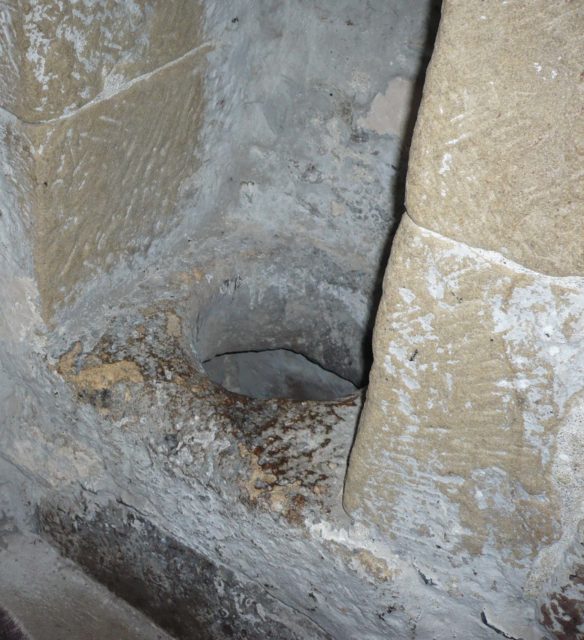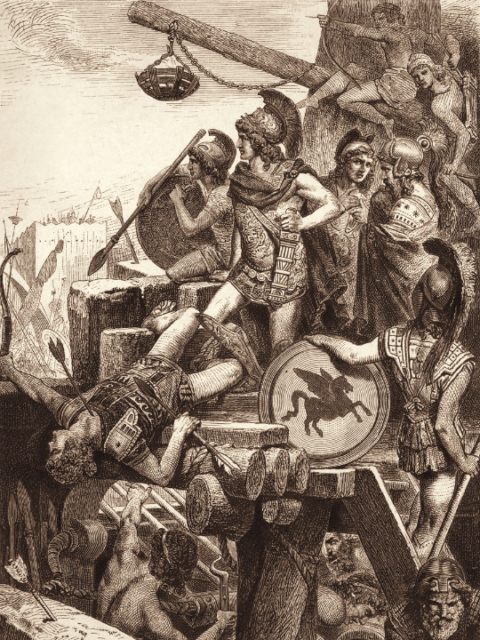The constant battle between defenses and breaking those defenses has raged throughout the history of humanity. Today, the war is mostly over, with offensive weapons emerging victorious. There are plenty of firearms that can penetrate body armor, anti-tank weapons that can destroy tanks, and missiles that can destroy bunkers.
This conclusion has not always been this clear, though, as for most of humanity’s existence defenses have prevailed. When your most powerful weapon is a club, what can you do against a stone wall? This forced mankind to get creative in their techniques of breaching defenses. Here are some of the weirder ones, in no particular order.
1. Rocket cats

A 16th-century artilleryman named Franz Helm, who lived in what is now Germany, authored a book on munitions, weapons, and artillery. In this book, he detailed a technique of causing havoc in a defensive system or town, with the use of a cat. Helm wrote:
Create a small sack like a fire-arrow. If you would like to get at a town or castle, seek to obtain a cat from that place. And bind the sack to the back of the cat, ignite it, let it glow well and thereafter let the cat go, so it runs to the nearest castle or town, and out of fear it thinks to hide itself where it ends up in barn hay or straw it will be ignited.
It is unknown if this rather optimistic plan was ever used, but if it was, it would have likely resulted in more destruction to your own property than to the enemy’s.
2. Up the toilet

This form of entry was through a part of a castle itself, rather than bringing your own equipment. Château Gaillard, a medieval castle, was completed in 1198 in France by Richard the Lionheart and was considered impenetrable at the time. Within 10 years of its competition, the castle had fallen into the hands of French King Philip II. His forces managed to enter and capture the castle’s outer areas, but couldn’t break through the central keep.
One of his men noticed a channel in the wall leading to one of the castle’s toilets. A man climbed up this filthy channel, through the toilet, and into the castle, where he opened a window to allow his fellow troops to enter too.
3. Flinging corpses

A force placing a castle under siege would often set up a camp nearby as a base of operations. These camps were filled with unhealthy, unhygienic troops, and disease was everywhere.
In 1346, the Mongols attacked the Crimean city Caffa and began a long siege. Eventually, the Mongol army began suffering from the Black Death, which was ravaging through their encampment. While most armies in this condition would most likely retreat, the Mongols saw the silver lining and started catapulting disease-ridden corpses over the city walls, with the aim of infecting those inside.
Some of the fleeing inhabitants of Caffa may have carried the Black Death to Europe, but this is not known for sure.
4. Hot Sand

This method was used by those under siege to repel attackers. Castles employed various techniques to keep attackers at bay, including dropping hot or burning things from the walls.
In 332 BC, Alexander the Great besieged and attacked the city of Tyre. The defenders inside resorted to heating up fine sand until it was glowing red, before pouring it out onto the attackers below. This was particularly effective, as the sand’s tiny particles would flow between the gaps in troops’ armor. The only relief was to remove the armor, which would then leave them vulnerable to archers.
Other similar methods included using burning hay, hot water, and hot oil.
5. Bees and beer
When attacking a walled area, the Vikings, who knew the defenders would be firing down onto them, used wooden structures called hurdles for protection while they made their way through the walls.
When they attacked the English town of Chester, the defenders gathered up as much beer as possible and heated it up, then poured it down onto the attackers, literally burning off their skin. Their wooden covers could resist projectiles, but the hot beer was able to seep through the gaps.
More from us: The Mulberry Harbor Paved The Way For Victory On D-Day
In response, the Vikings sealed their shielding with animal hides, deflecting the hot beer. Again in response, the defenders began throwing beehives at the Vikings, who were then savagely swarmed by angry bees.
